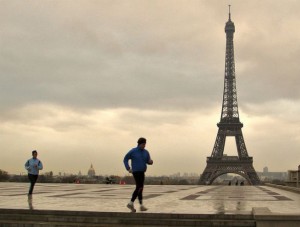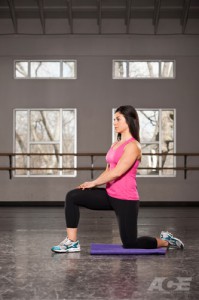 Whether for business or leisure, Australians are regular, enthusiastic travellers. Many of our Inspire Fitness members ask us for advice on effective exercises for dealing with the physical and mental demands when they travel. Just because you’re on the road doesn’t mean that your health and fitness has to fall behind.
Whether for business or leisure, Australians are regular, enthusiastic travellers. Many of our Inspire Fitness members ask us for advice on effective exercises for dealing with the physical and mental demands when they travel. Just because you’re on the road doesn’t mean that your health and fitness has to fall behind.
Staying active is important to compensate for the negative effects of prolonged sitting, and to help you cope with the stresses and fatiguing effects of regular travel. Reclaim your mobility with these quick, simple exercises, all of which require no equipment whatsoever:
Mobility and Flexibility
Shoulder Swings
(Watch from 2:17 to 4:43)
- Circle your arms smoothly and with control in each direction: to the sides, above your head, down and out in front of your hips, across the front of the torso, and then across the back of your torso to finish.
- You may feel discomfort towards the limit of your range of motion; this is normal. However, do not try to “push through” your range of motion if it triggers pain.
CST Handcuff
(Watch from 0:25 to 0:48)
- As you perform this exercise, one hand will act as a cuff through which your other hand will slide (as shown in the video). Use the thumb of your sliding hand as a reference point. Begin with the thumb pointing towards the midline of your body. As you slide the arm down through the cuff, rotate and straighten at the elbow so that your thumb rotates clockwise. At the bottom of the movement, your thumb should be pointing out to the side (e.g., if the right arm is the sliding arm, the thumb should be pointing out to the right at the bottom of the sliding movement).
- As you slide your arm to the bottom of the movement, contract the muscles of your middle back and upper arm to drive the sliding arm towards the floor. This will also cause a stretch through the front of the chest and shoulder, on the same side as the sliding arm.
- To return to the start, gently bend and rotate at the elbow, allowing your thumb to rotate counter-clockwise and back to the starting position.
Kneeling Hip Flexor Stretch
Click here to watch a video demonstration (external link to Core Performance).
 With leg room on flights becoming smaller and extra space being sold for a premium, it’s no wonder that your hips end up absorbing a lot of tension when you are travelling. Tightness often accumulates through the hip flexors, which are connected to your lower back and pass over the front of your hips. Tight hips can cause big issues “up and down the chain”, as pain in the foot, ankle, and knee are often caused by poor hip mobility. Similarly, tight hip flexors can substantially change the position of the pelvis, putting undue pressure on the lumbar spine and frequently causing of lower back pain. For these reasons, stretching your hip flexors regularly is just as important for “desk jockeys” as well as travellers.
With leg room on flights becoming smaller and extra space being sold for a premium, it’s no wonder that your hips end up absorbing a lot of tension when you are travelling. Tightness often accumulates through the hip flexors, which are connected to your lower back and pass over the front of your hips. Tight hips can cause big issues “up and down the chain”, as pain in the foot, ankle, and knee are often caused by poor hip mobility. Similarly, tight hip flexors can substantially change the position of the pelvis, putting undue pressure on the lumbar spine and frequently causing of lower back pain. For these reasons, stretching your hip flexors regularly is just as important for “desk jockeys” as well as travellers.
- Your starting position is to kneel on one knee. For comfort, you may choose to place a folded towel beneath the knee on the kneeling side. Set up with both knees positioned at approximately 90 degrees.
- Engage the glutes on the kneeling side, while at the same time contracting your lower abdominals. When done properly, your pelvis will tilt “north”, rotating up towards your chest. You should feel the stretch across the front of the hip and thigh on the kneeling side.
- You can lean slightly forward to extend the stretch, though be careful not to push the front knee past the line of the toes.
Keep an eye on the Inspire Fitness blog for part two of our “Exercises For Travellers” series. We’ll cover some useful exercises for keeping up your muscular strength, even when you don’t have access to any gym equipment!
Tell us readers, what are your favourite ways to stay active and healthy when travelling?
